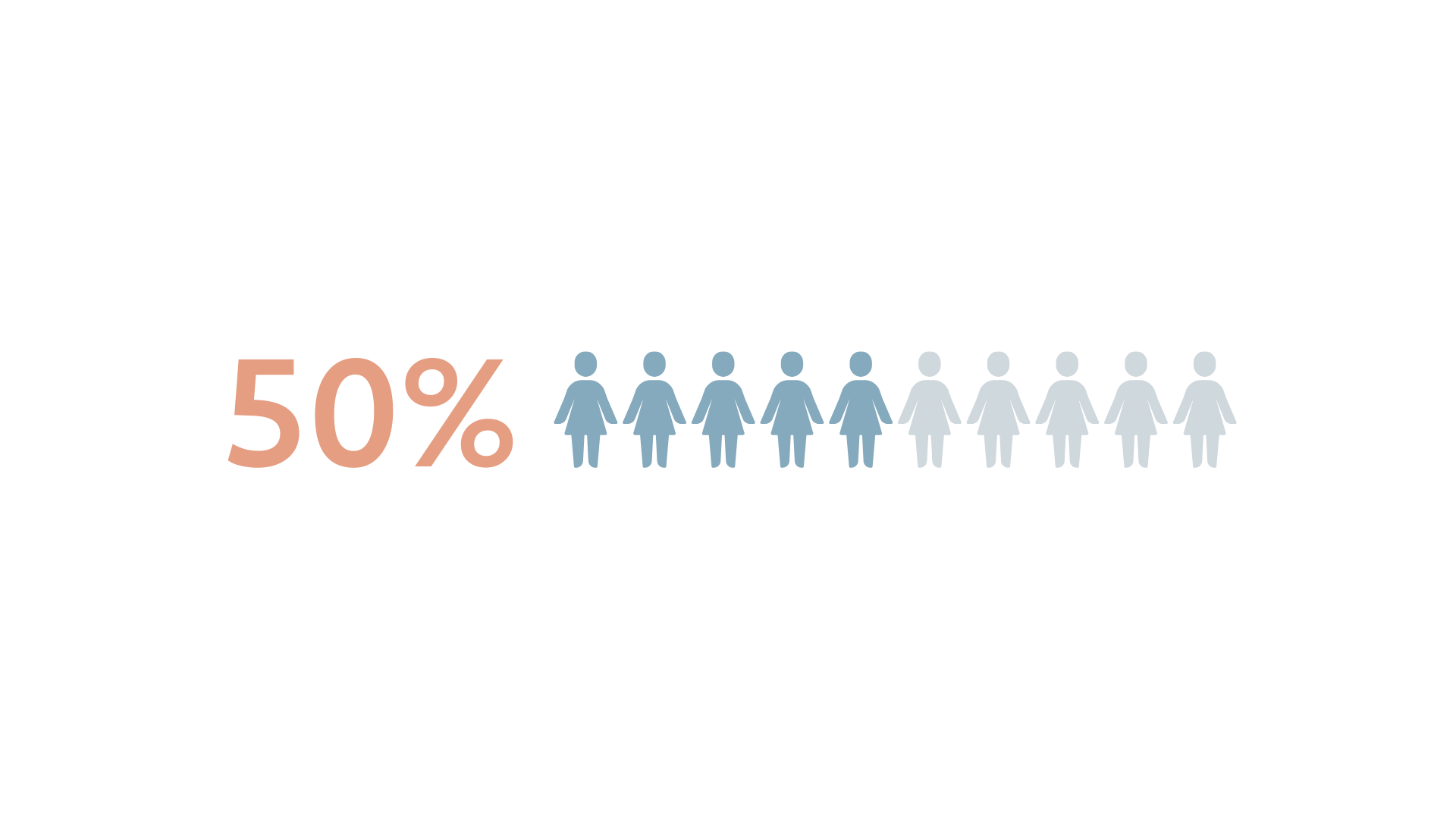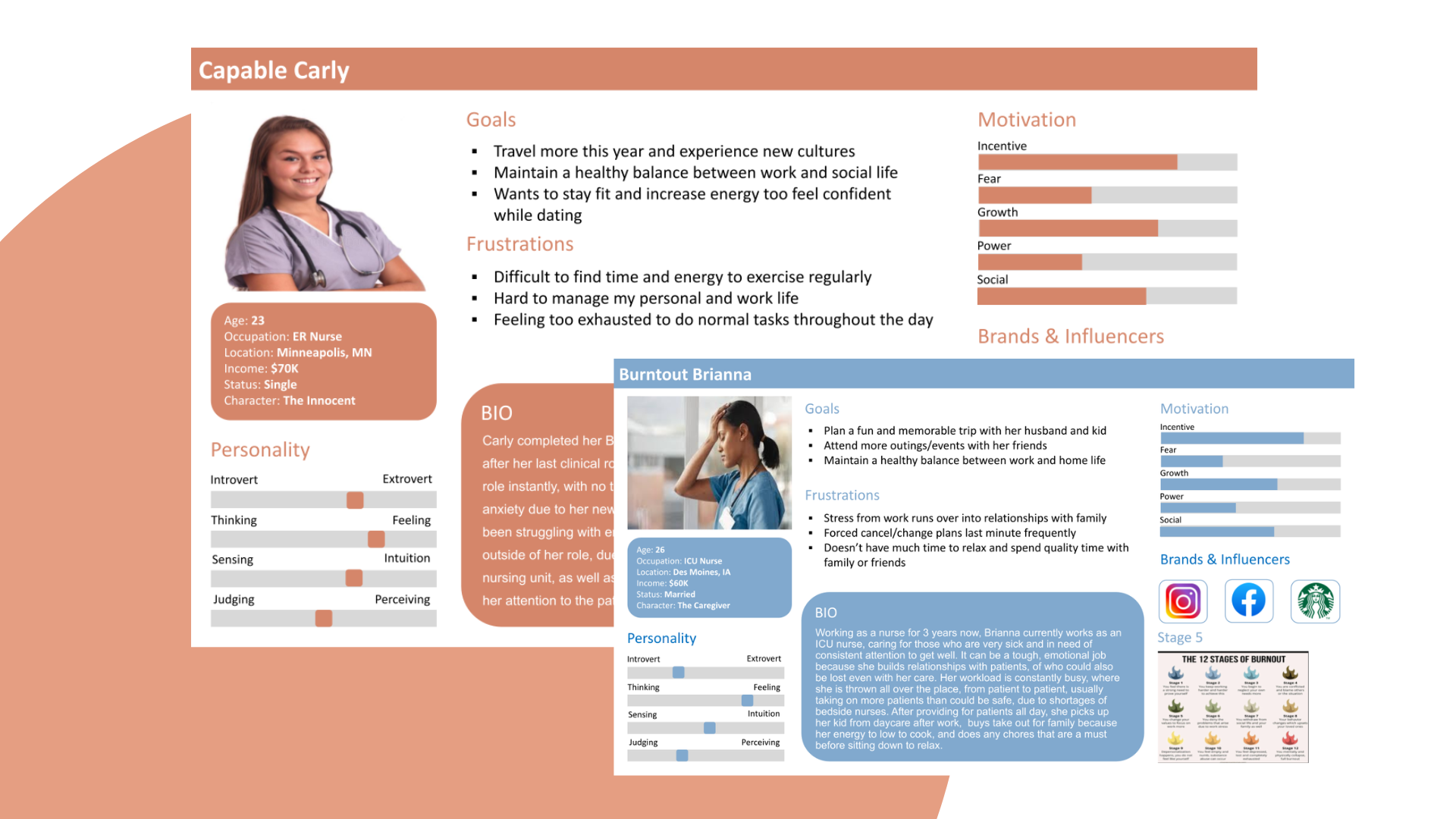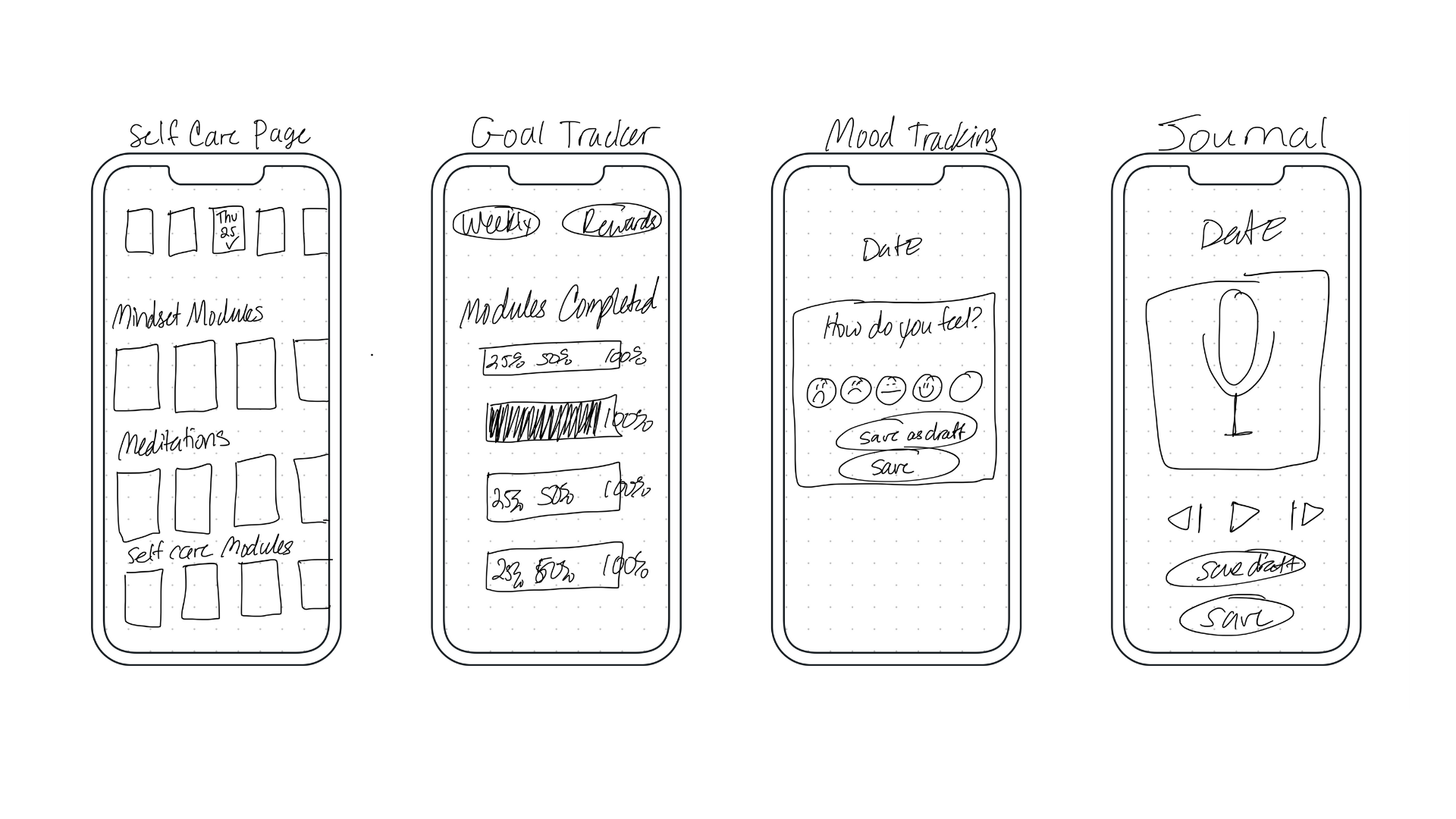
Cultivated Care
An accessible self-care solution created specially for clinical professionals to help reduce stress, improve well-being, and reduce excessive turnover for hospitals.
Cultivated Care
Project Type Mobile App Design - Case Study
Team Solo Project - Design Lead
Timeline 12 weeks, January-March 2023
Project Brief The goal of this project was to create a mobile app solution to support nurses with self-care and mental health, on the job and outside of the job.
My Role I independently designed & created an app that aims to educate on mental health, provide support, allow for emotional expression, and help users prioritize their self-care.
Project Outcome Created MVP mobile app designs & prototype
Initial Problem Discovery
I’ve noticed nurses tend to be consistently stressed and burnt out due to their work.
Initial Research/Problem Validation
Nurses burn out faster than almost any other professional, and it’s only getting worse…and they’re quitting!
Research shows that 1/3 of nurses overall plan to quit nursing in 2022 due to burnout, which is a 40% increase over the last 5 years.
The average cost of turnover for a bedside registered nurse is between $40,038-$51,700. The hospital then loses roughly $3.6M-$6.5M annually.
The Solution
Create an application provided by hospitals to enable nurses to de-stress on and off of the job.

You seem swell.
I suppose I’ll share my process with you!
Research Takeaways | What problem am I solving | Where should I solve it | How should I solve it | Who am I solving for
Based on the insights above…
How might we create a solution that positively impacts nurses’ well-being and reduces the cost of turnover by keeping nurses in their careers long-term?
What methods of UX research will I use to help achieve clarity?
#1 User Interviews
Research Context
5 interview participants- via facebook nursing groups, community nursing professionals
30 minute interviews with users at different points in tenure for feedback on different journey points
1 week recruitment, 2 week interview timeline
Conclusions
Nurses have minimal options to express or reduce stress on the job: long hours, heavy workloads (Quote: all I’m asking for is a break!)
Not only does burnout affect performance, but this stress bleeds into life outside of work due to no support system on the job.
#2 Competitive Analysis
My goal was to get curious and explore the competitive landscape revolving around self-care features that are well-received.
Takeaways
Threats- features including: journal entries, mood tracking, meditation, and cognitive behavioral education as proposed solutions.
How could Cultivated Care take inspiration from these competitor features?
Opportunities- There is no (direct!) competition! My app could be free for nurses via insurance, and provided by hospitals as in-house support.
#3 User Survey Results
of nurses surveyed experience significant stress.
These nurses were up to 5 years into their career, and mentioned stress at both work and home. (23-38 year old on average, 100% female demographic)
100%
of nurses agreed having mental health support is vital
88.9%
described their colleagues mental health as stressed
Whose problem am I solving?
These user personas showcase nurses who are up to 3 years into their profession, with varying levels of burnout on the job.
Persona 1- Capable Carly
A young, recent graduate who is most likely to reach burnout and quit within her first 1-2 years. On average, burnout occurs within 2 years.
Persona 2 - Burntout Brianna
A young nurse, with 3 years of experience. Burnout can happen at any time for nurses, and it’s still possible to prevent further burnout to retain nurses if support is given at this point.
Now for the nitty-gritty…the designs!
Initial Design Ideation | Information Architecture | MVP Features | Mid-Fidelity User Flows | Final User Flows & Prototype
Initial Design Ideation
I created initial sketches to map out possible information architecture of the application and MVP screens.
Information Architecture
Through user testing and research, I found that goals were a more important feature than first assumed. By simplifying my information architecture, it lead became easier to navigate and users felt it was more intuitive.
Now for what you’ve been waiting for…
Wireframes to High Fidelity Designs
Flow #1
Design Change
Final Flow #1
During testing, I also found that it was important to alert users to how to use a new feature. Therefore, I designed a tool-tip, to showcase the drag and drop feature for adding their self-care modules to the calendar.
Self-Care Reminders
During testing, I found that starting with a full calendar was not as straightforward, and focused on general management vs. the user’s specific needs.
I decided to switch from a task-focus, to a module focus: putting the solution first, and then creating a way to support nurses via reminders in their calendar.
100% of users found this method easier to set up options for self-care.
Flow #1
Self-Care Reminders
Final Flow #2
Mood Journal
80% of users found it valuable to have mood tracking instantly, and this allowed me to design more valuable content in the task sections place.
Flow #2
Mood Journal
100% of users did not find it clear how to get into the mood tracking/journal feature in this original flow.
Flow #2
Design Change
Flow #3
Design Change #1
Flow #3
Design Change #2
Final Flow #3
Goals & Achievements
80% of users were excited to track their accomplishments, and see the progress they’ve achieved revolving their self-care goals. However, it was very confusing to find.
Results from testing showed that 80% of users felt that having their main goals showcased on the home page to increase accessibility and would help them stay motivated to continue to utilize the app for self-care.
Flow #3
Goals & Achievements
Reflection Time!
Takeaways + Next Steps
Direct experience with users can speed up the process!
With my background in health coaching, my strength in empathizing and creative problem-solving became a strength and I knew this was a problem I wanted to tackle head on!
Changing perspective can change the direction of the solution!
I changed my perspective from only nurses, to also the hospital’s point of view when it came to the positives of the creating this app. I learned that from the right perspective, you can make progress by taking a direction and running with it!
User testing is essential!
You find out so much through actual testing that you wouldn’t have assumed beforehand! Major design changes came later in the process to improve the quality of the app and thus improve the solution thanks to user testing.
Future opportunities for impact with Cultivated Care…
Opportunities outside of healthcare! I shared my app idea with a Project Manager and she exclaimed, “That’s brilliant! Can you make one for us!?”




















